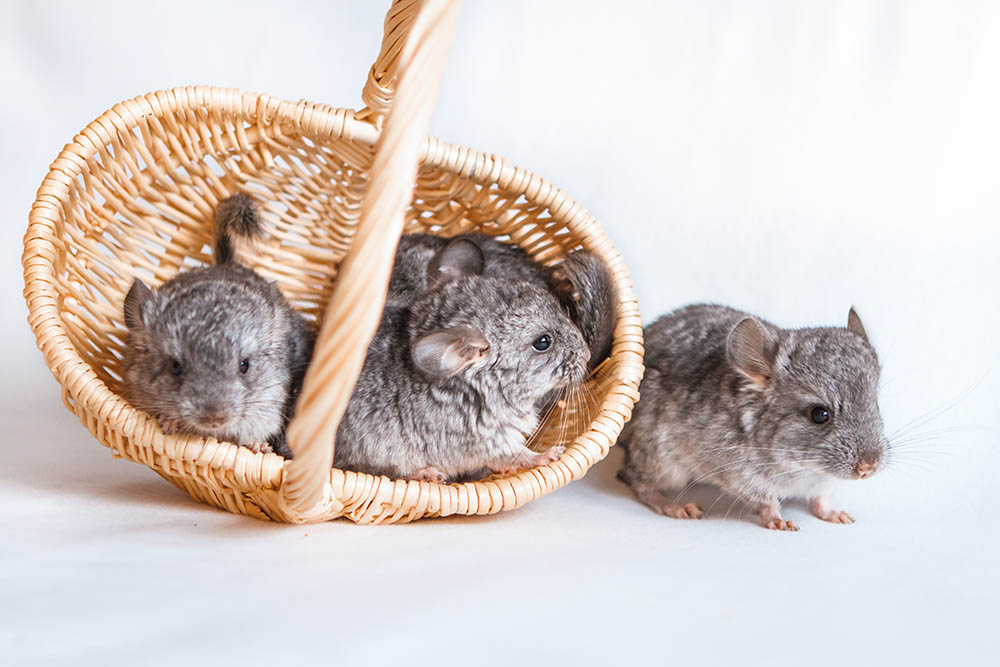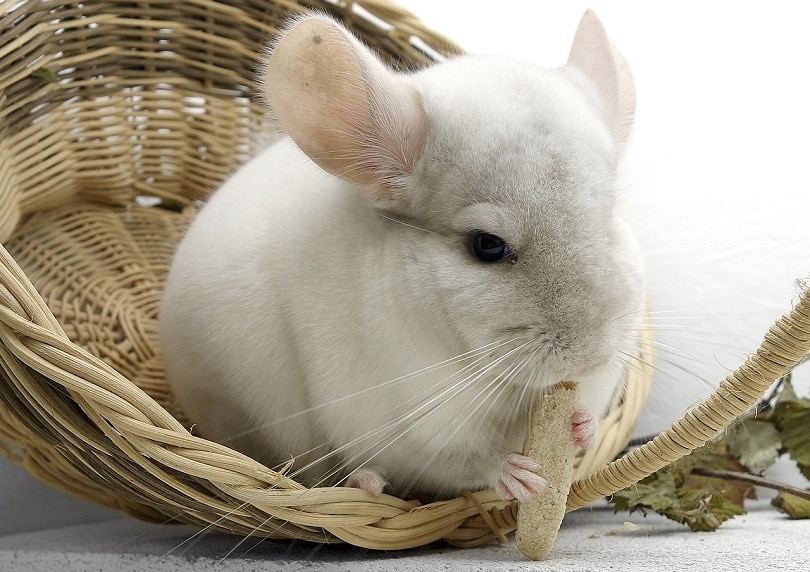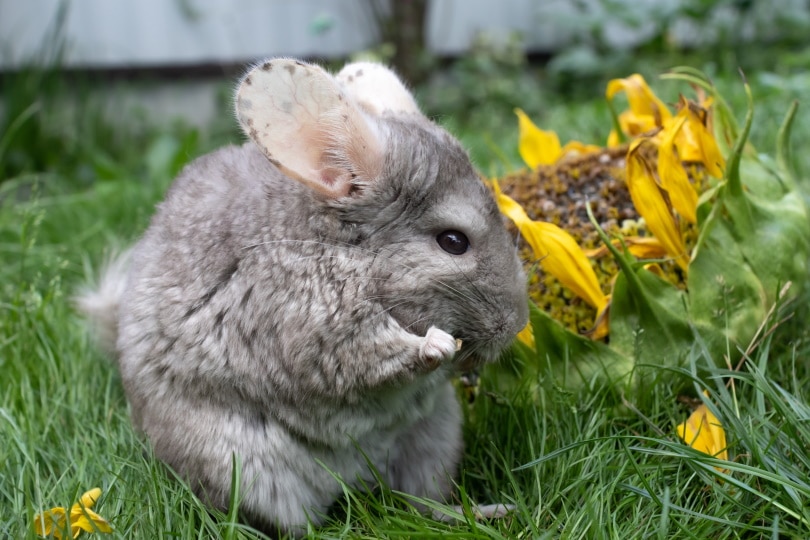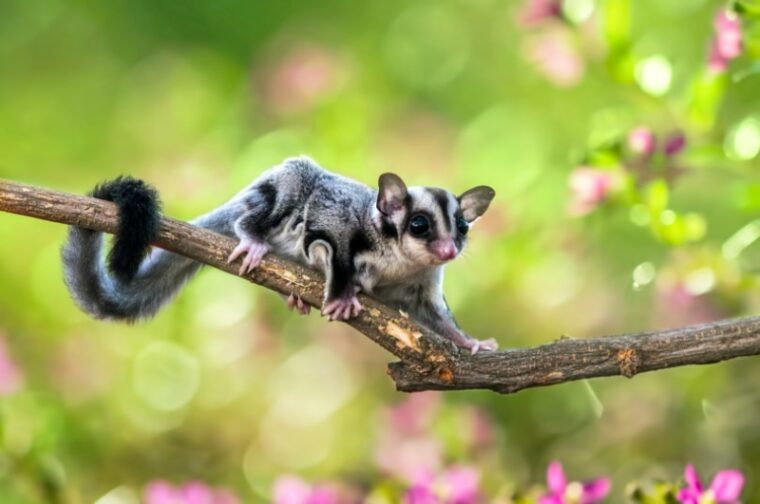
Sugar gliders are the adorable little squirrel-like creatures that leave many people wanting one after they see one in pictures and videos or online. However, these delicate creatures have very specific care needs and not everyone is equipped to give them the care they need. Providing an improper environment is extremely stressful to sugar gliders and can lead to poor health and a shortened life expectancy.
If you’re interested in bringing a sugar glider into your home, make sure you’re ready to care for their sensitive needs. With proper care, these social creatures can make great pets.
Sugar Glider Facts
These tiny marsupials are native to Australia and New Guinea and they entered the exotic pet trade in the US in the 1990s. Their cute appearance made them quickly grow in popularity and they have remained one of the more popular mammals in the exotic pet trade, along with animals like hedgehogs, ferrets, and prairie dogs. There are still some illegal activities in the trade of sugar gliders, so you should always make sure to purchase one from a reliable source.
Sugar gliders have a life expectancy from 10–15 years, so they are a long-term commitment. Sugar gliders kept with improper husbandry usually live from 5–8 years, so it causes a significantly shortened life expectancy. They are around 5–6 inches in body length, but their long tails add another 5–6 inches or so. Sugar gliders generally weigh between 4–5 ounces. They usually have a body that is cream, gray, or brown, along with markings that are tan or tawny. Sugar gliders can also be albino, which is lacking all melanin, so fur is white and eyes are red or pink, and leucistic, which is all white fur with black or brown eyes.
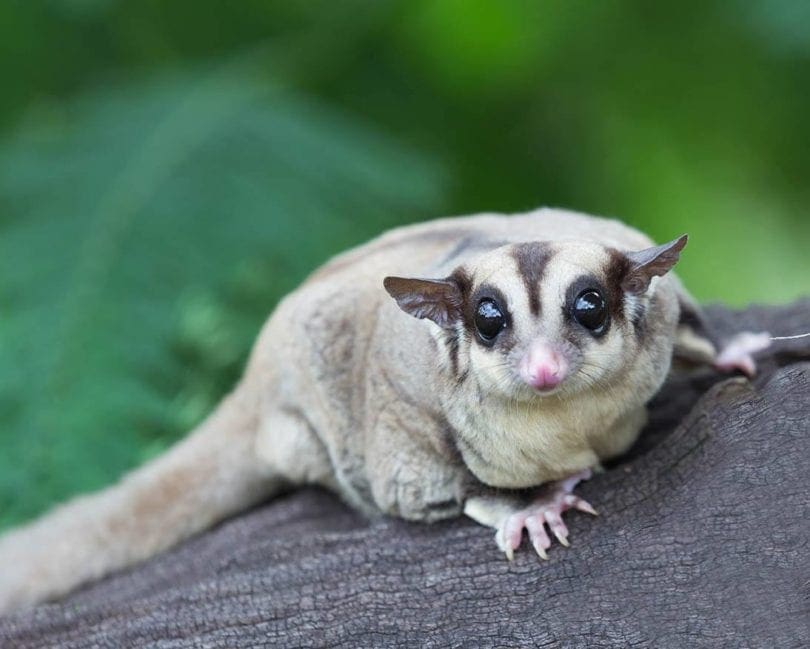
Do Sugar Gliders Make Good Pets?
Sugar gliders are extremely social animals, but they don’t always make good pets. It’s best to keep them in pairs or groups, which is how they live in the wild. Singular sugar gliders often get lonely, even with human interaction. One issue that many people encounter with sugar gliders is that they are nocturnal, so they prefer not to be handled during the day. Stressed sugar gliders may bite and it’s important to build trust with your sugar glider slowly and not force stressful interactions.
These animals can be noisy, often making a barking noise, and since they are nocturnal, it’s not unusual for them to be noisiest at night. They do require daily care, needing fresh water at all times and fresh food twice daily, as well as routine social interactions to build trust and meet their social needs. Sugar gliders can be messy and smelly, so spot-cleaning the enclosure daily and performing a full enclosure cleaning weekly is ideal to maintain health and hygiene.
Where Can I Get a Sugar Glider?
Sugar gliders may be difficult to come across in pet stores, but some do carry them from time to time. Your most likely source for a sugar glider will be finding one through a breeder or an online distributor. Some pet stores may be able to special order one for you as well. Sugar gliders are usually captive-bred, but illegal capture and trade of sugar gliders is part of the multibillion-dollar illegal animal trade.
Wild capture can be disruptive to the ecosystem and stressful for the animals, so it’s important to thoroughly vet anyone you purchase a sugar glider from. Often, wild animals are used for breeding so the babies can be sold as “captive-bred” or “farmed”, so asking about the origin of the parents is important.
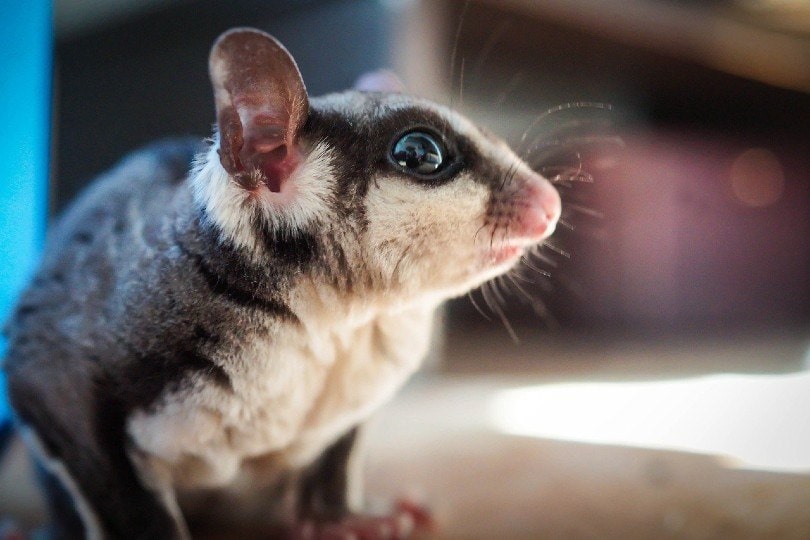
How Much Does It Cost to Own a Sugar Glider?
Purchasing a sugar glider is going to cost you anywhere from $100-500 depending on the age, origin, and color of the sugar glider. Sugar gliders require quite a large, tall enclosure that allows plenty of room for climbing, plus bedding, décor, and enrichment activities, which is all going to cost you up to $200–$300. For a baby sugar glider, you can start off with a smaller enclosure and work up to a larger one as it grows. Expect to spend around $20–$30 monthly for food and supplements.
When you first bring your sugar glider home, you’ll want to get an appointment for a vet to check it over, which will likely cost you $50–$75 or more depending on the area you live in. Sugar gliders should have an annual vet visit to verify they are healthy, which will cost about the same as the initial vet visit. Many people who keep males and females together have their males neutered to prevent unwanted pregnancies, which can cost up to $200. As always, it’s a good idea to keep an emergency fund in case of unexpected illness or injury.

What Kind of Home Does My Sugar Glider Need?
Enclosure
The enclosure should allow your sugar glider to jump and climb. It’s generally recommended to have an enclosure that is, at minimum, 3 feet by 2 feet by 3 feet. Metal cages with bars that are less than ½ inch apart are recommended. Larger spacing between bars can allow for escapes. Ideally, the cage door should be lockable.

Bedding
Paper-based bedding, which can be shredded paper or commercially available bedding, is recommended. Any bedding used should be non-toxic if ingested and it should be able to absorb waste and water. Cedar bedding can cause respiratory problems in many animals, including sugar gliders.
Food and Water
Sugar gliders should always have access to clean water either in a dish or a sipping bottle. This will depend on what your sugar glider prefers, so you may have to try both to determine their preference. It’s a good idea to have two or more water containers available in various cage locations. Shallow food dishes should be used to minimize the amount of food that ends up in the tank substrate.
Sleeping
Your sugar glider’s enclosure should have a fabric bag or pouch that can be hung near the top of the enclosure. This will serve as a safe sleeping place during the day. This pouch should be thick enough to block most lighting but lightweight enough to allow for adequate air passage.
Toys and Enrichment
Sugar gliders should have access to lots of places to jump and climb, like branches. They also will benefit from an enclosed exercise wheel that doesn’t allow their tail to get caught, ladders, bells, and hanging bird toys can all be fun and enriching toys for sugar gliders.
What Should I Feed My Sugar Glider?
Sugar gliders are omnivorous, so their diet should consist of both plant and animal food sources.
Approximately 25% of their diet should consist of fruit, 25% protein, and 50% should be commercial sugar glider food or homemade Bourbon Modified Leadbeater’s diet.
Fruits appropriate for sugar gliders include grapes, bananas, mangoes, peaches, and melon.
Veggies for sugar gliders can include corn, sweet potatoes, carrots, and spinach. Proteins for sugar gliders can be things like cooked, unseasoned lean meats and cooked eggs.
The Bourbon Modified Leadbeater’s diet, or BML, is a homemade diet that consists of ingredients like reptile vitamin supplements, peeled hard boiled egg, honey, baby cereal, and high protein baby food like chicken.
As a treat, sugar gliders love to eat things like mealworms, earthworms, crickets, and nuts. These things are high in fat and should be fed in moderation as treats and not as main dietary components. Vitamin and mineral supplementation may be necessary, which can be achieved with many reptile vitamin and mineral supplements but talk to your vet to see if your sugar glider requires this supplementation. Clean water should always be available.
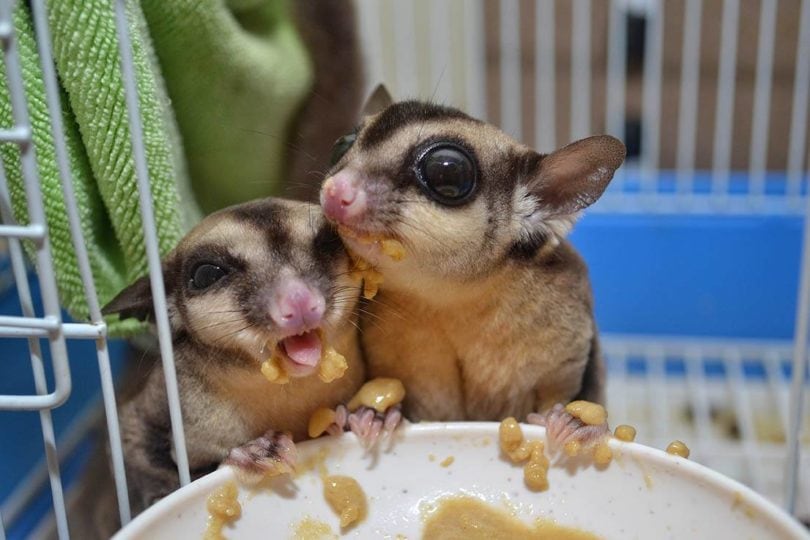
How Do I Take Care of My Sugar Glider?
Feeding
Offer a balanced diet to your sugar glider twice daily. Many people offer food at dawn and dusk and leave the food in the enclosure until the next feeding because sugar gliders tend to graze instead of eating all their food in one sitting.
Socialization
Slowly socialize your sugar glider through feeding and tank cleaning until they are comfortable enough for you to begin touching and handling them. Sugar gliders will develop preferences toward certain people, especially those that feed and care for them. Once they’re bonded, sugar gliders enjoy hanging out in people’s pockets and often become comfortable meeting new people. Sugar gliders should slowly be introduced to each other or to other pets in the home. Some sugar gliders get along well with cats, dogs, and other pets, but these introductions should be made slowly and safely, and these animals should never be left unattended.

Bathing
Sugar gliders are clean and can be fastidious, so they will never require bathing unless they have somehow gotten something on them that is toxic or they are unable to clean off themselves.
Temperature
These animals prefer warm temperatures between 75–80°F, but they can live comfortably in temperatures from 65–90°F. This means that most sugar gliders can be kept at normal room temperature, although babies should be kept warmer with pet safe heat rocks or heating pads.
Enrichment
These active, social animals enjoy having lots of toys, like bird toys, balls, and tunnels. They spend most of their time climbing and jumping, so they should have lots of branches and ladders available and toys should be at multiple levels of the enclosure. Providing new toys and rotating the location of toys on a regular basis will keep things interesting.

Enclosure Maintenance
Every day, you should check the enclosure for any areas that need to be spot cleaned. Make sure to check branches, toys, bedding, and food and water bowls for waste or anything that needs to be cleaned up. The entire enclosure should be wiped down weekly and all bedding replaced. Be sure to only use pet safe cleaning supplies and never use cleaning sprays with your sugar glider in the enclosure.
How Do I Know If My Sugar Glider Is Sick?
Obesity
If fed too many fatty or high-sugar foods, sugar gliders can gain too much weight. Obesity can lead to joint pain, lethargy, heart disease, and other serious conditions. It’s important to feed your sugar glider a healthy, balanced diet to prevent these issues. If your sugar glider is overweight or obese, talk to your vet for guidance on helping it lose weight.
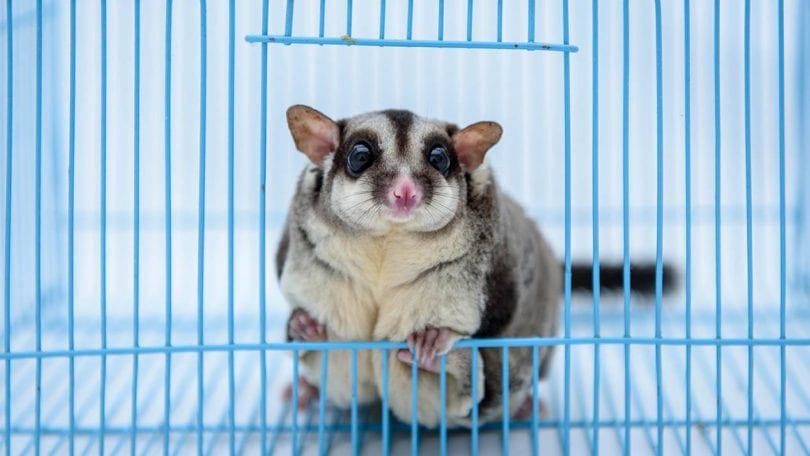
Malnutrition
Malnutrition can be caused by not feeding enough, but it can also be caused by feeding a diet that is inadequate in nutrients. Malnutrition can lead to issues like lethargy, weight loss, and bone disease. If your sugar glider seems thin or malnourished, talk to your vet as soon as possible to get your sugar glider evaluated for underlying medical conditions.
Dental Disease
A high sugar diet can lead to dental disease in sugar gliders, which will be recognizable by inappetence, lethargy, and a foul smell from your sugar glider’s mouth. There are dental-support treats and chews on the market for sugar gliders, and your vet will be able to clean your sugar glider’s teeth if needed.
Stress
Caused by illness and improper husbandry, stress can lead to serious medical issues and a shortened life expectancy. Make sure you are allowing your sugar glider to sleep through the day and only disturbing them during their normal wake times. Providing a safe, clean enclosure and adequate diet will help prevent stress as well. Stressed sugar gliders can often be seen biting themselves and pulling out their fur.
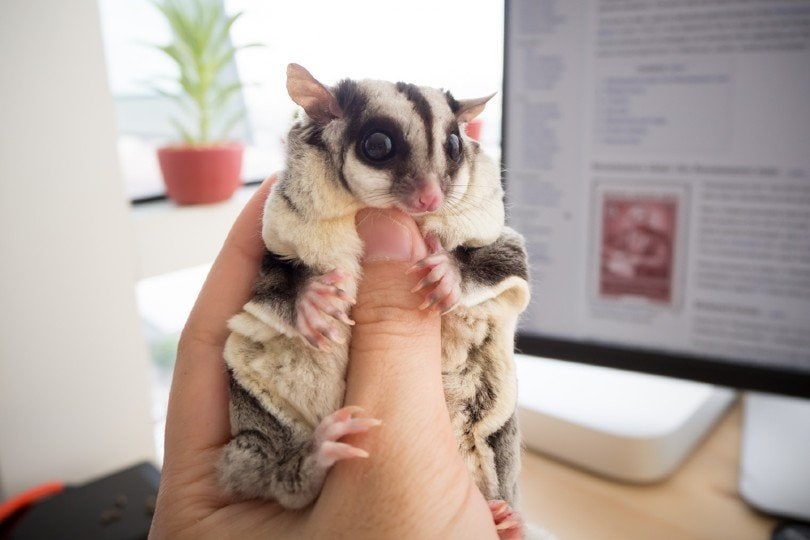
Parasites
If you notice your sugar glider has diarrhea, inappetence, lethargy, or noticeable parasites in its stools, then it may have parasites. Parasites can be visible or invisible to the naked eye, so your vet will need to provide a diagnosis and treat the parasites.
Conclusion
If cared for properly, sugar gliders can make excellent pets. They can even make great pets in homes with children, but children should understand to gently handle and respect these animals. They are social and friendly, but they can become stressed and they are somewhat delicate. If you can provide a stable, stress-free home for a sugar glider, then they will be happy and healthy for years to come.
Related reads:
- 18 Sugar Glider Colors and Patterns (with Pictures)
- 8 Monkey Breeds That Are Kept As Pets (with Pictures)
- How Many Babies Do Sugar Gliders Have in a Litter?
Featured Image Credit: Arif Supriyadi, Shutterstock



